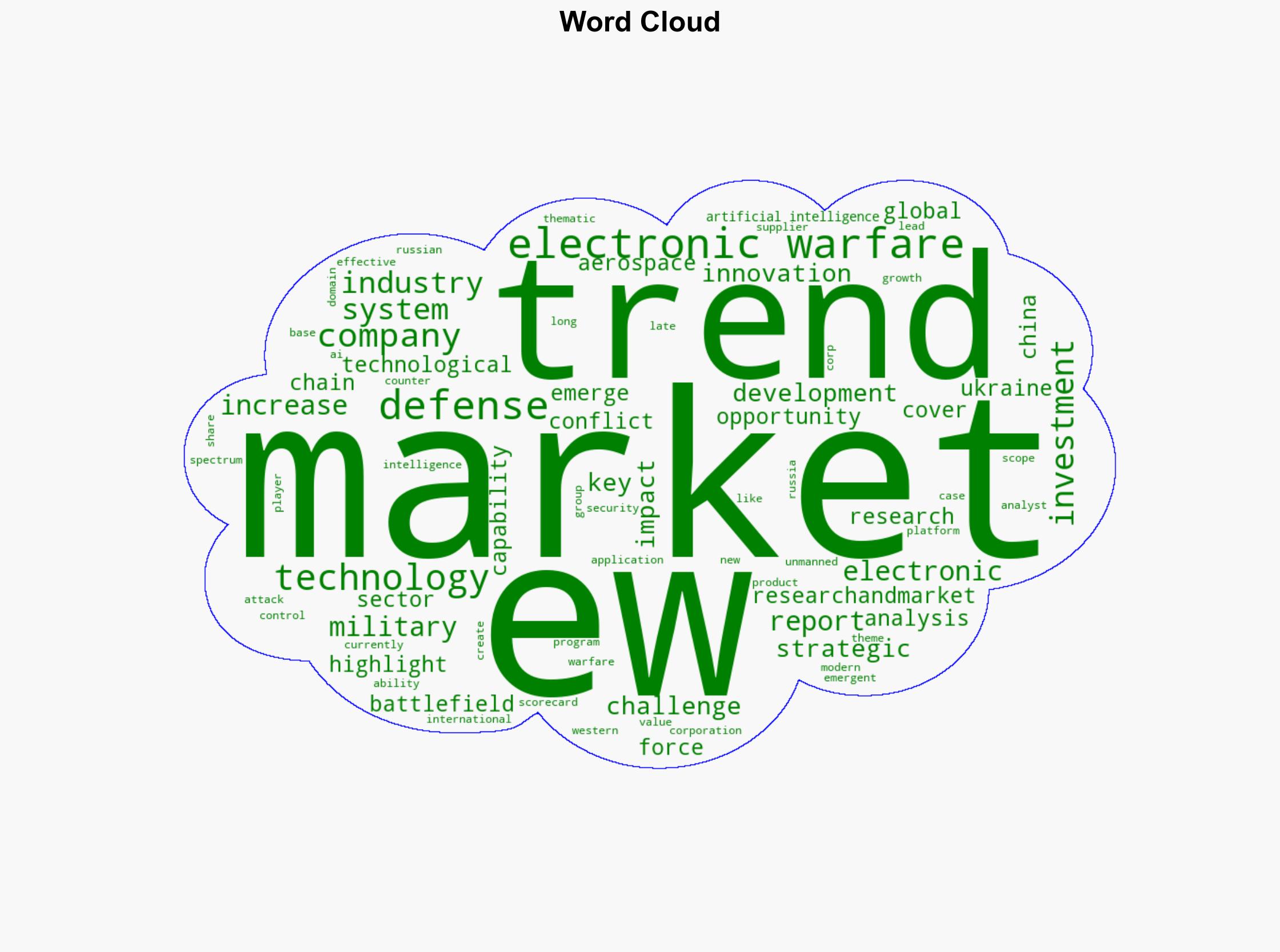Electronic Warfare Strategic Intelligence Report 2025 Analysis of Various Solutions Programs and Projects Currently Under Development As Well As the Impact of Emerging Technologies – GlobeNewswire
Published on: 2025-10-31
Intelligence Report: Electronic Warfare Strategic Intelligence Report 2025 Analysis of Various Solutions Programs and Projects Currently Under Development As Well As the Impact of Emerging Technologies – GlobeNewswire
1. BLUF (Bottom Line Up Front)
The resurgence of electronic warfare (EW) capabilities, driven by increased investments from major global powers like China and Russia, poses a significant challenge to Western military superiority. The most supported hypothesis is that these investments will lead to a technological overmatch in the electromagnetic spectrum, necessitating a strategic pivot by Western allies to bolster their EW capabilities. Confidence Level: High. Recommended action includes accelerating investment in AI and machine learning for EW systems and strengthening collaborative defense initiatives.
2. Competing Hypotheses
Hypothesis 1: The increased investment in EW by China and Russia will lead to a technological overmatch in the electromagnetic spectrum, challenging Western military capabilities and necessitating a strategic pivot by Western allies.
Hypothesis 2: Despite increased investments, Western allies will maintain their strategic advantage through superior innovation and collaborative defense initiatives, effectively countering the advancements made by China and Russia.
Using ACH 2.0, Hypothesis 1 is better supported due to the current trajectory of investments and the historical context of Russian EW capabilities demonstrated in Ukraine. Hypothesis 2 lacks sufficient evidence of accelerated Western innovation in the EW domain.
3. Key Assumptions and Red Flags
Assumptions:
– China and Russia’s investments will directly translate into superior EW capabilities.
– Western allies will not significantly accelerate their innovation pace.
Red Flags:
– Potential underestimation of Western technological advancements.
– Overreliance on historical data without accounting for recent strategic shifts.
4. Implications and Strategic Risks
The increased focus on EW by major powers could lead to an arms race in the electromagnetic spectrum, with potential economic and geopolitical ramifications. The risk of hybrid warfare, including cyber and EW attacks on civilian infrastructure, is heightened. This could escalate tensions and lead to broader conflicts if not managed through diplomatic channels.
5. Recommendations and Outlook
- Accelerate investment in AI and machine learning for EW systems to counter potential technological overmatch.
- Enhance collaborative defense initiatives among Western allies to share technological advancements and strategies.
- Scenario Projections:
- Best Case: Western allies achieve technological parity through rapid innovation and collaboration.
- Worst Case: China and Russia achieve technological overmatch, leading to strategic vulnerabilities.
- Most Likely: A balanced scenario where both sides continue to innovate, maintaining a competitive equilibrium.
6. Key Individuals and Entities
No specific individuals mentioned in the source text. Key entities include China, Russia, and Western military alliances.
7. Thematic Tags
national security threats, cybersecurity, counter-terrorism, regional focus




